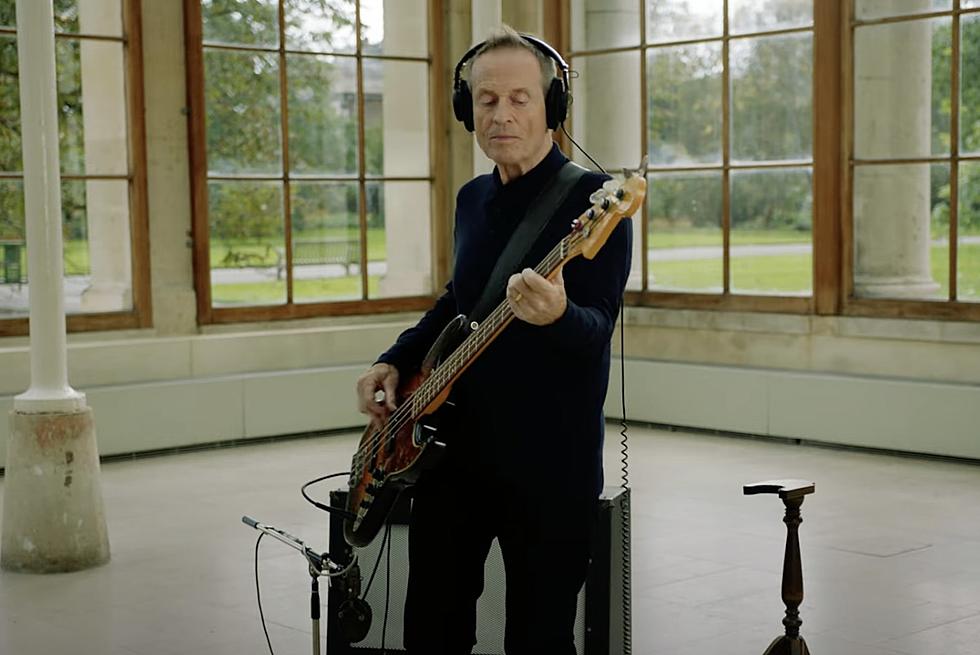
How John Paul Jones Sparked Led Zeppelin’s ‘Tricky’ ‘Black Dog’
“It was tricky to play,” Jimmy Page once said of “Black Dog,” foreshadowing the frustration of so many classic-rock bar bands.
The song opens Led Zeppelin’s untitled fourth LP with a hard-rock whiplash, constructed around a knotty, deceptively complex riff written by bassist John Paul Jones. It remains one of the band’s signature cuts, a true showcase for each member — but it took a Herculean effort to piece together that puzzle.
“I wanted to try an electric blues with a rolling bass part. But it couldn’t be too simple,” Jones later recalled to journalist and filmmaker Cameron Crowe. “I wanted it to turn back on itself. I showed it to the guys, and we fell into it.” But the shifting time signatures were tough to pin down — especially, as Page told SiriusXM in 2014, “the bit where it goes into sort of triplets in one part and overlaps.” Drummer John Bonham had the toughest job: figuring out how to lay down a solid groove amid such musical trickery. “We struggled with the turnaround,” Jones added, “until Bonham figured out that you just four-time as if there’s no turnaround. That was the secret.”
Robert Plant still had to carve out his own path into the maze. And one arrived through Page, who designed a call-and-response approach inspired by the a cappella/full-band dynamic of Fleetwood Mac’s 1969 single “Oh Well (Pt. 1).” The singer kept things simple, howling vintage-styled blues lines about making a lover “sweat,” “groove,” “burn” and “sting.” “Really if you’re asking me what my part of it was,” Page told SiriusXM, “it was actually taking it from a riff and making it into a piece of music — more constructed, more as a working piece so we could all sort of play it.”
And as the band’s producer, working alongside engineer Andy Johns, he was also crucial in shaping the track’s distinctive sound — from the opening helicopter-propeller tonal swirl to a crunching guitar tone that, according to 2018’s Led Zeppelin All the Songs: The Story Behind Every Track, nodded to Neil Young and Crazy Horse’s “Cinnamon Girl.”
To give his solo a left-field flavor, Page ran his instrument through a Leslie speaker — the end result has a silvery sparkle that jarringly jumps out from the backdrop, like a UFO swooping into a clear blue sky.
Much of the guitar work on “Black Dog” is noticeably sloppy — even for Page, a player who always prioritized feel and emotion over rhythmic and pitch perfection. Many of his bends on the solo are a tad sharp or flat, and he lands way ahead of the beat several times during the main riff (for example, around 2:43), giving that section a strange tension.
The Led Zeppelin IV sessions spanned December 1970 to February 1971, largely at the historic Headley Grange country house in Hampshire, England — and that laid-back, idyllic setting even seeped into the track listing: Notably, “Black Dog” was named after a roaming canine who kept drifting in and out of the studio.
Despite being such an oddly arranged piece, “Black Dog” was issued as a U.S. single, reaching No. 15 on the Billboard Hot 100. And by then it was already a set-list staple, having been debuted live (alongside “Rock and Roll,” “Going to California” and “Stairway to Heaven”) on March 5, 1971 — eight months before the album release. It stayed in the mix for the majority of the band’s run, and a deliciously nasty take highlighted their 2007 reunion at London’s O2 Arena.
Every one of those performances was riveting, but Led Zeppelin never quite mastered “Black Dog” — every version was a roller-coaster ride, and the twists and turns weren’t always smooth. But it's hard to imagine this enthralling tune without that sense of musical free fall.
Led Zeppelin Albums Ranked
More From 102.9 WBLM










